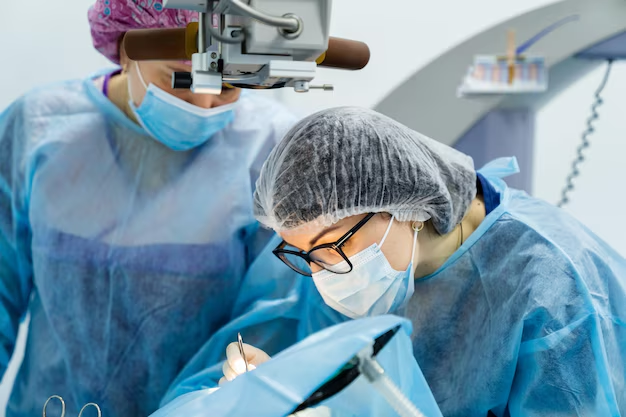Understanding Cataract Eye Surgery: Time, Process, and Expectations
Have you or a loved one been diagnosed with cataracts, leaving you wondering about cataract eye surgery? When the clouding of your eye's natural lens starts to blur vision, surgery becomes a likely option. A prevalent question on many patients' minds is, "How long does cataract eye surgery take?" The answer is crucial for planning and peace of mind. Let's delve into the surgery's timeline, what it entails, and related subtopics to give you a comprehensive view.
The Surgical Timeline: What to Expect
Duration of the Procedure
Cataract eye surgery is known for being a quick and effective procedure. On average, the surgery itself takes about 10 to 20 minutes. It's performed on an outpatient basis, meaning you can go home the same day. Despite its short duration, several factors before and after the surgery could extend your time at the facility.
Pre-Surgery Preparation
Before the actual surgery, you can expect some preparatory steps that are essential for a successful outcome:
- Initial Assessment: Upon arriving, you'll undergo a series of checks. This involves confirming your medical history and any allergies. An ophthalmologist or staff member will also clarify what the procedure involves.
- Pupil Dilation: Your eyes will need to be dilated with special drops. This allows the surgeon to see and access the cataract more easily. Dilation can take about 20 to 30 minutes to complete.
- Anesthesia: The surgery itself typically requires local anesthesia in the form of an eye drop or injection, which numbs the eye. Some facilities may offer a mild sedative to help you relax, adding around 10 to 15 minutes to your pre-surgery timeline.
The Procedure
During the surgery, the surgeon will remove the clouded lens and replace it with a clear artificial lens, known as an intraocular lens (IOL). This new lens helps restore clear vision. The actual removal and replacement process is what constitutes the 10 to 20-minute surgical time.
Here’s a concise overview:
- Small Incisions: A tiny cut is made in the eye to reach the lens.
- Lens Removal: Using a method called phacoemulsification, the cataract-affected lens is broken up with ultrasound waves and removed.
- Lens Implantation: An IOL is inserted through the incision. This lens unfolds within the eye.
Post-Surgery Care
After surgery, you'll spend some time in recovery—typically 30 minutes to an hour. This allows medical staff to monitor you as the anesthesia wears off, ensuring you're stable before you head home. You'll need someone to drive you home due to impaired vision from dilation and the aftereffects of sedation.
Factors Influencing Surgery Duration
While the standard surgery time is relatively short, several factors can influence how long you’ll spend in the medical facility:
- Patient Health: Underlying health conditions or eye complications might require additional monitoring or preparation time.
- Facility Protocols: Different clinics or hospitals might have varied processes that can add time to your visit.
- Surgeon's Technique: Some surgeons may perform more meticulous work, which could slightly extend the procedure's duration.
Summary of Time Commitments 📝
Here's a quick rundown of time-related aspects:
- Surgery duration: 10-20 minutes ⏱️
- Pre-surgery preparation: 30-45 minutes 🚦
- Recovery time: 30-60 minutes 🛌
Dive Into Related Subtopics
Understanding the ins and outs of cataract surgery extends beyond just the procedure itself. Let's explore related areas that provide a fuller picture for anyone preparing for or learning about cataract surgery.
Types of Intraocular Lenses (IOLs)
When you undergo cataract surgery, the removed cloudy lens is replaced by an IOL. Not all lenses are the same. Each type has specific benefits:
- Monofocal Lenses: These are designed for one distance—typically far vision. They are the standard option.
- Multifocal Lenses: Allow for both distance and close vision, reducing the need for glasses.
- Toric Lenses: Specifically designed to correct astigmatism.
Choosing an IOL
The decision about which IOL to use depends on several factors, including lifestyle needs, eye health, and the surgeon's recommendations. Discussing these options thoroughly with your ophthalmologist ensures the best fit for your individual needs.
Recovery and Aftercare
Post-surgery care is critical. Though you'll return home shortly after the procedure, recovery takes several weeks:
- Immediate Aftercare: Avoid rubbing or pressing your eyes.
- Follow-Up Visits: Regular check-ins with your doctor will likely be scheduled to ensure proper healing.
- Activity Restrictions: Refrain from heavy lifting, bending over, or any activity that puts strain on your eyes during the initial weeks.
Potential Risks and Complications
Like any surgery, cataract surgery is not without potential risks:
- Infection: Rare but possible, emphasizing the need for sterile conditions.
- Swelling: Some patients may experience slight swelling or redness.
- Dislocation of IOL: Though uncommon, the lens may need repositioning.
Fortunately, these complications are manageable and infrequent, especially with experienced surgeons.
Navigating the Path Forward
Embarking on cataract surgery is a significant decision influenced by personal health considerations, lifestyle impacts, and desired outcomes:
- Consulting a Specialist: Always consult with a certified ophthalmologist to discuss candidacy for surgery.
- Considering Timing: Decide when to have surgery based on your lifestyle, personal needs, and, sometimes, urgency.
- Insurance Considerations: Many insurance plans cover cataract surgery, but knowing details about copayments or additional costs is beneficial.
Key Takeaways for Prospective Patients 🗝️
- Plan Ahead: Know your pre-surgery and post-surgery protocols.
- Choose the Right IOL: Discuss lens options with your doctor to match your vision goals.
- Understand Recovery: Follow all provided aftercare instructions to facilitate swift recovery.
Embracing a Brighter Vision
Approaching cataract surgery entails understanding the time commitments, the procedure details, and the aftercare requirements. With knowledge comes confidence in what to expect and how to prepare, making the journey towards clearer vision smoother and more reassuring. By informing yourself and consulting professionals, you're well-equipped to manage the entire cataract surgery experience effectively.
